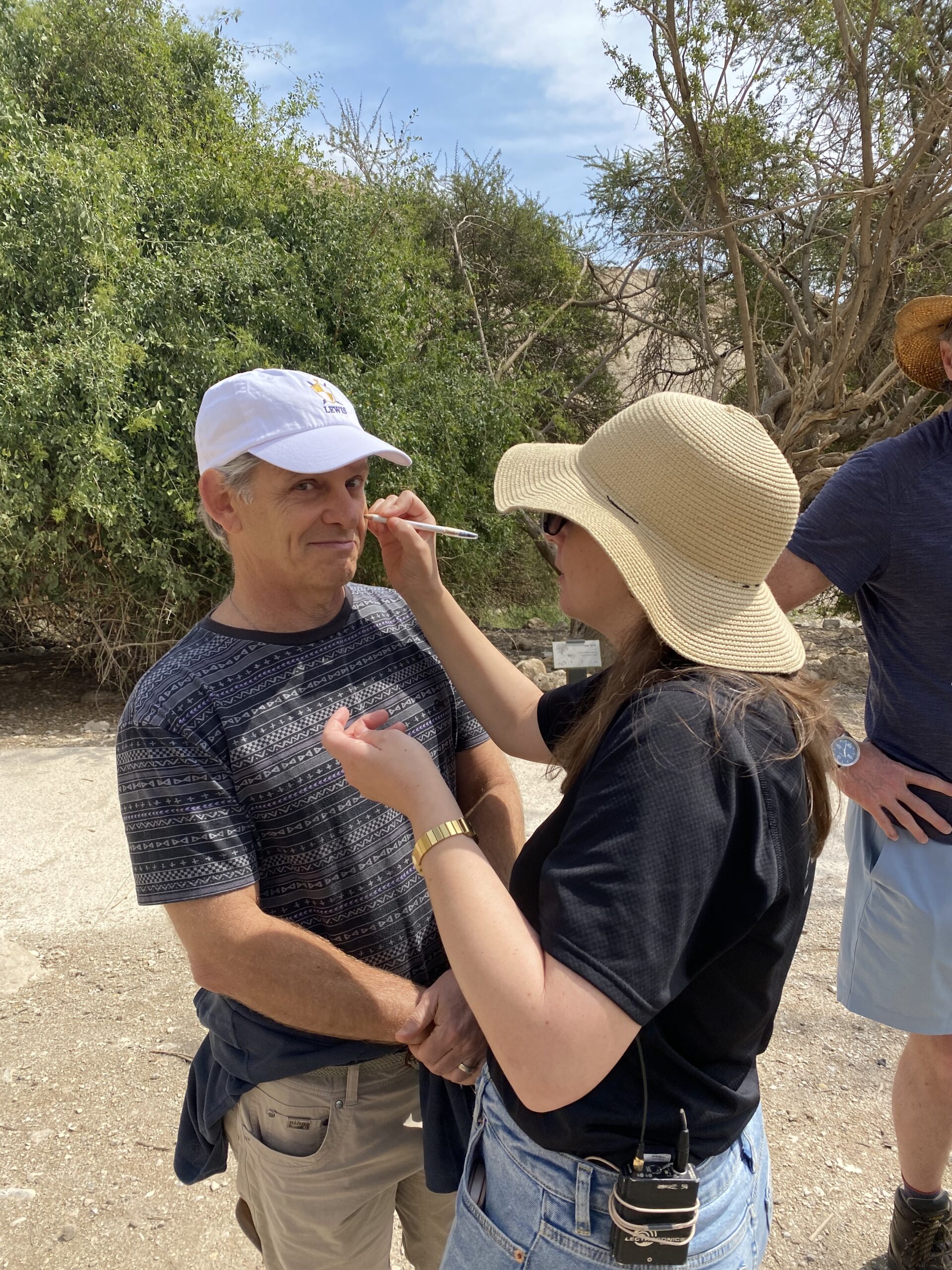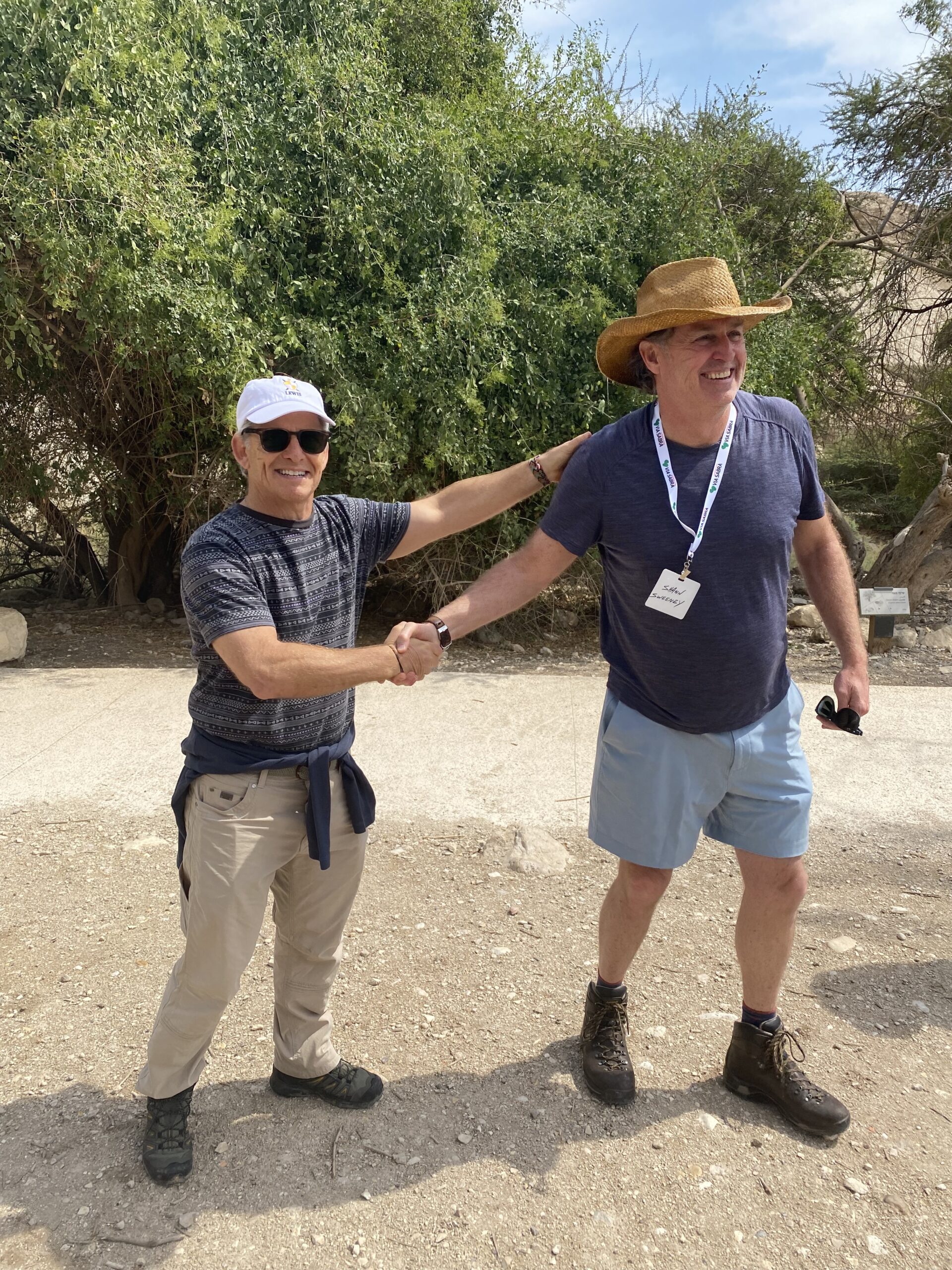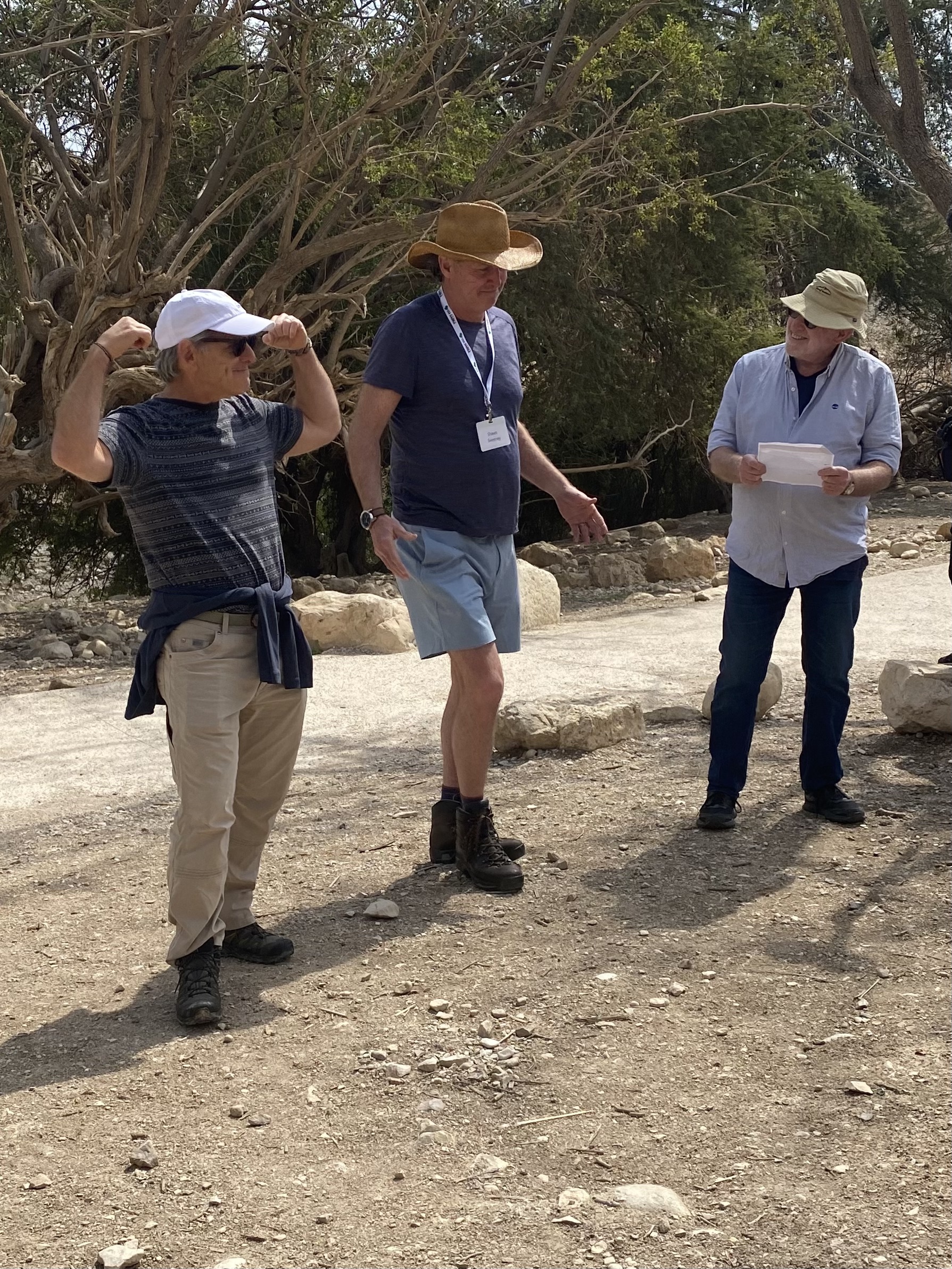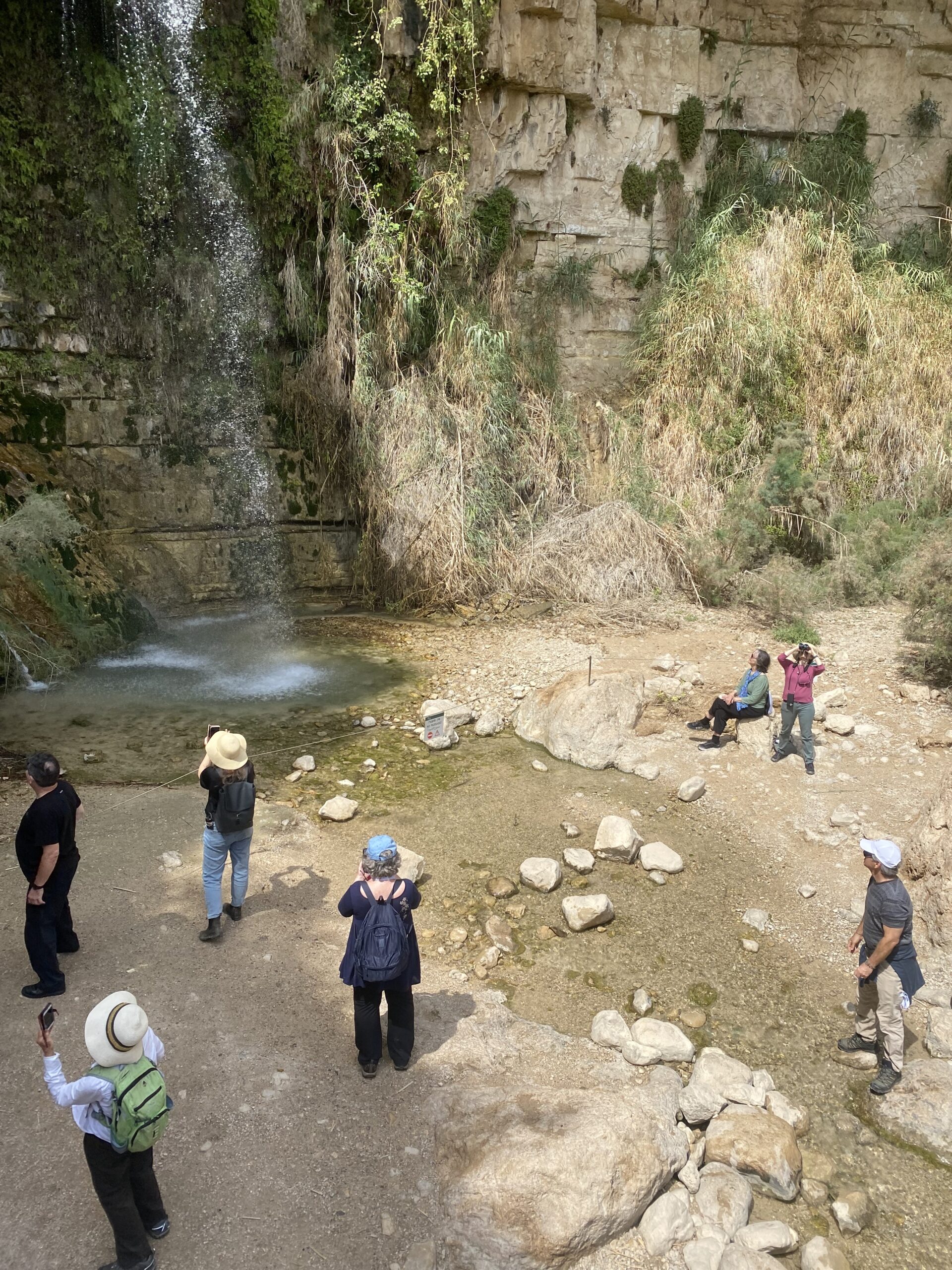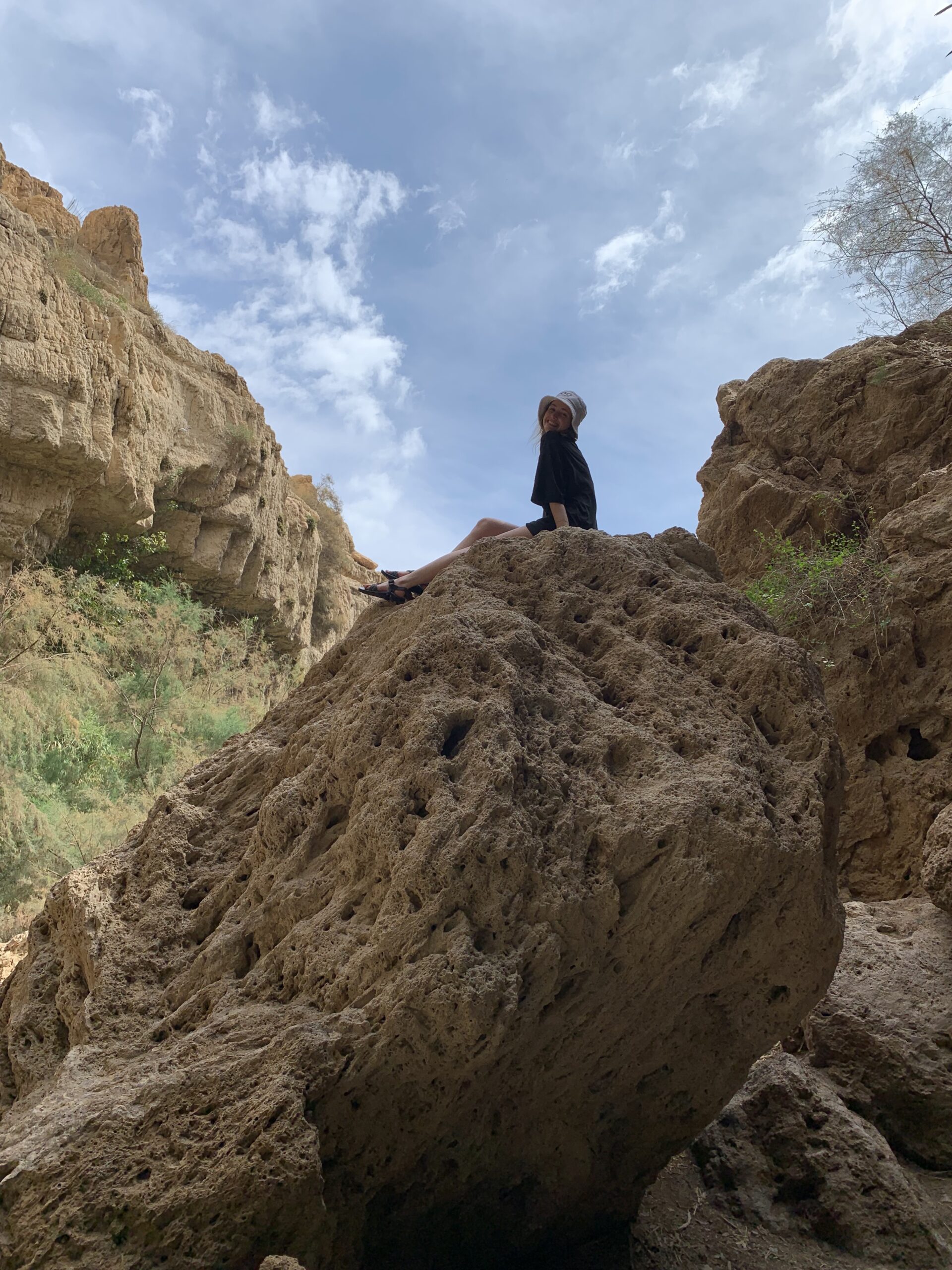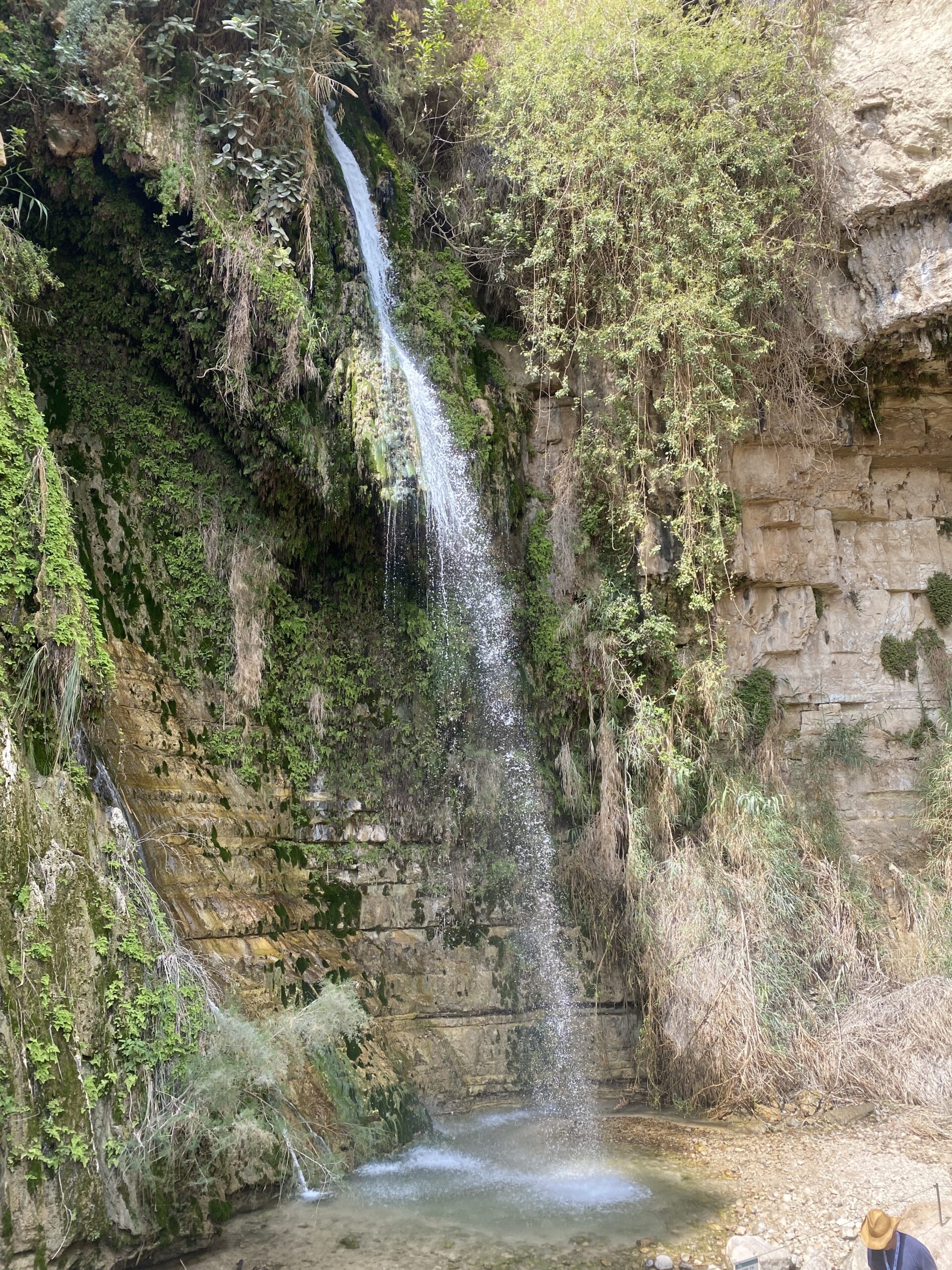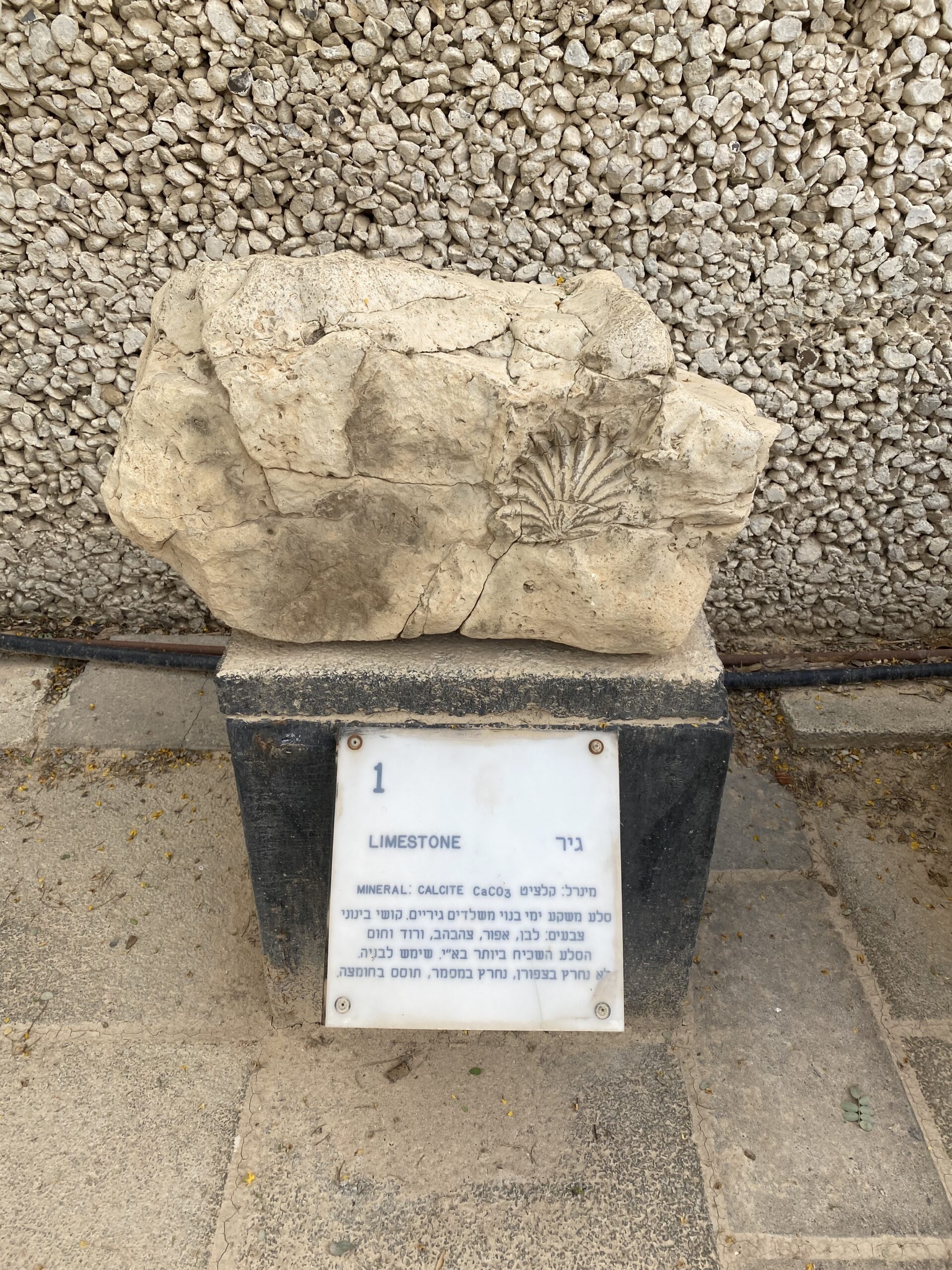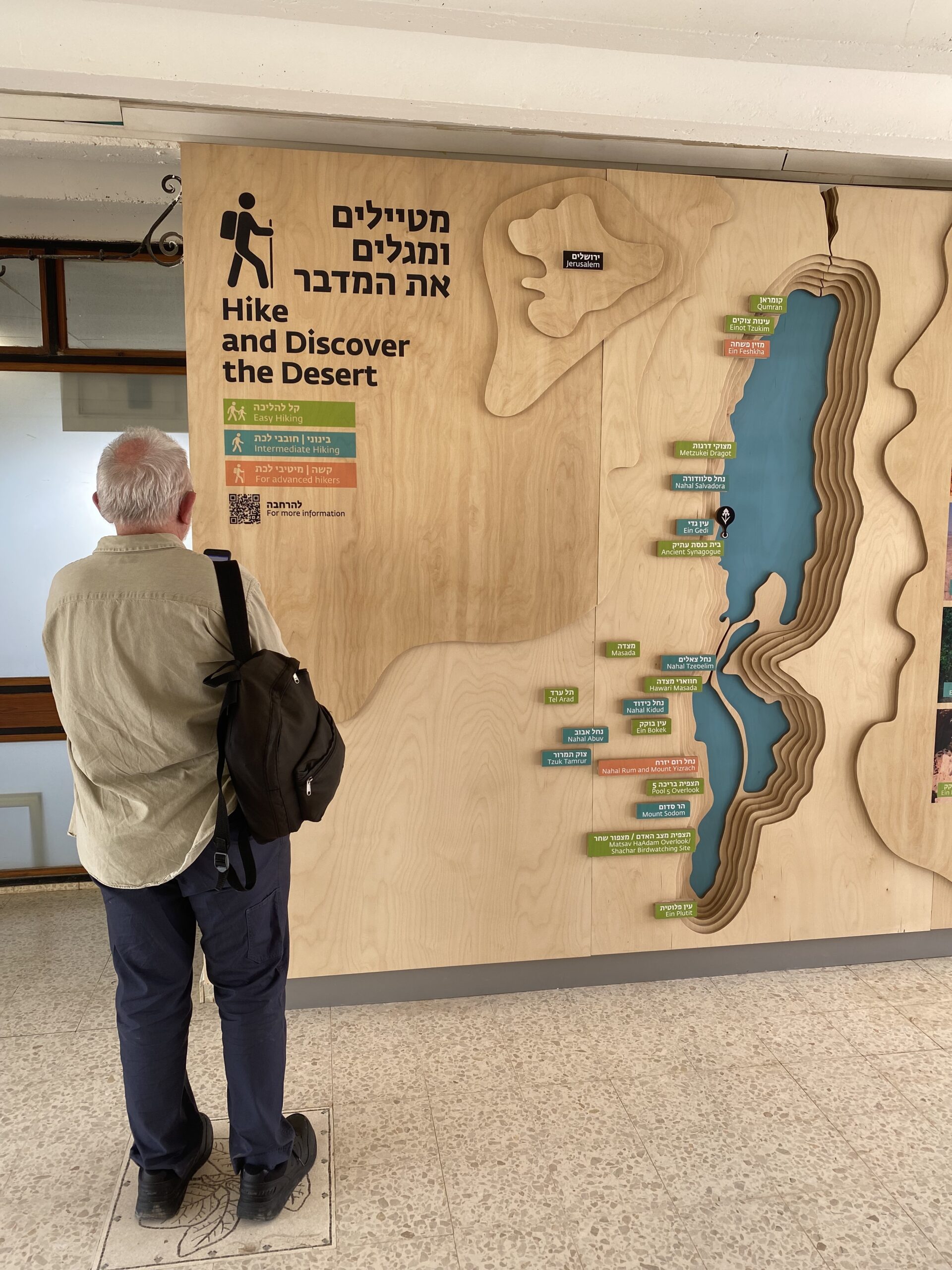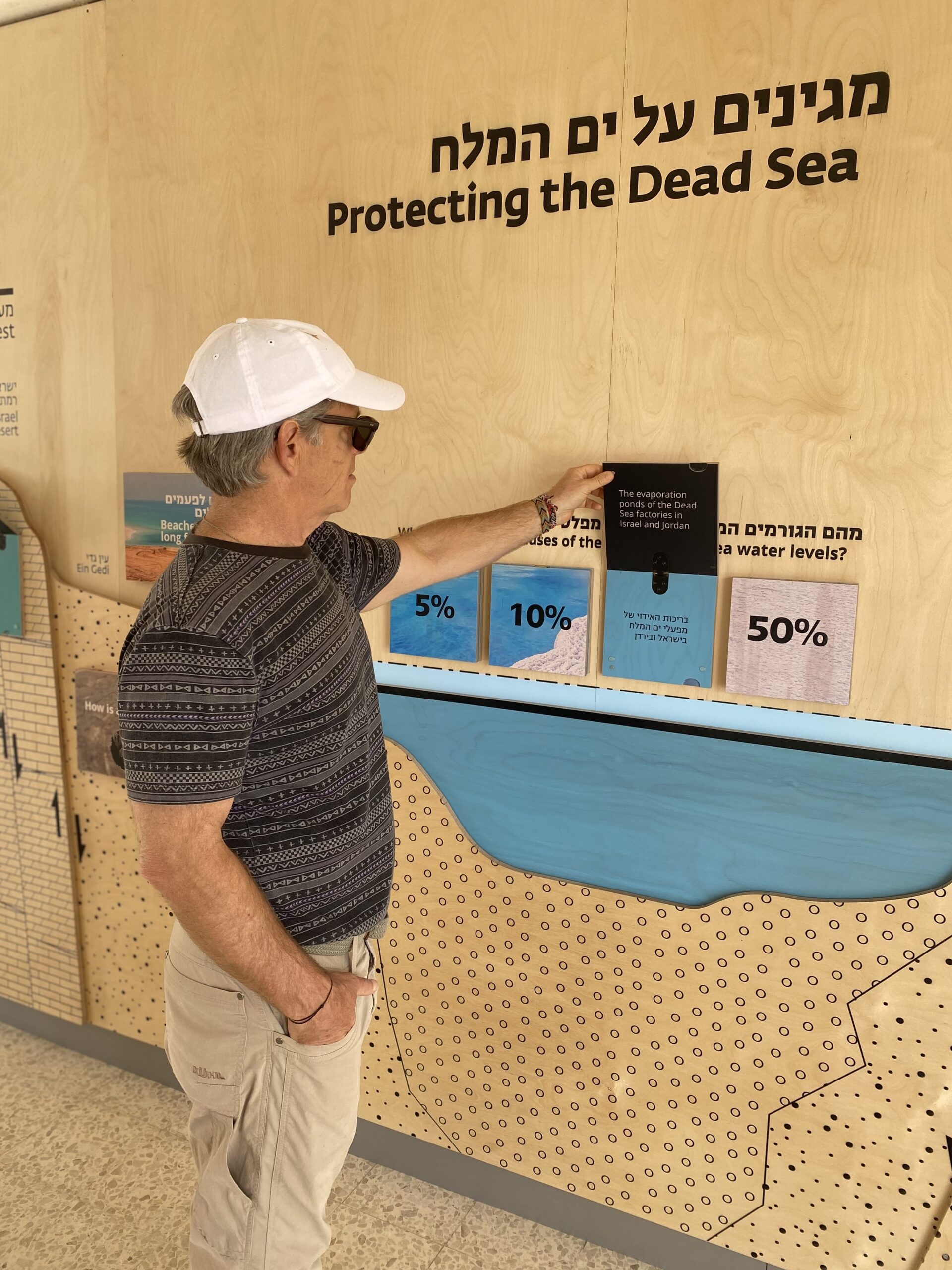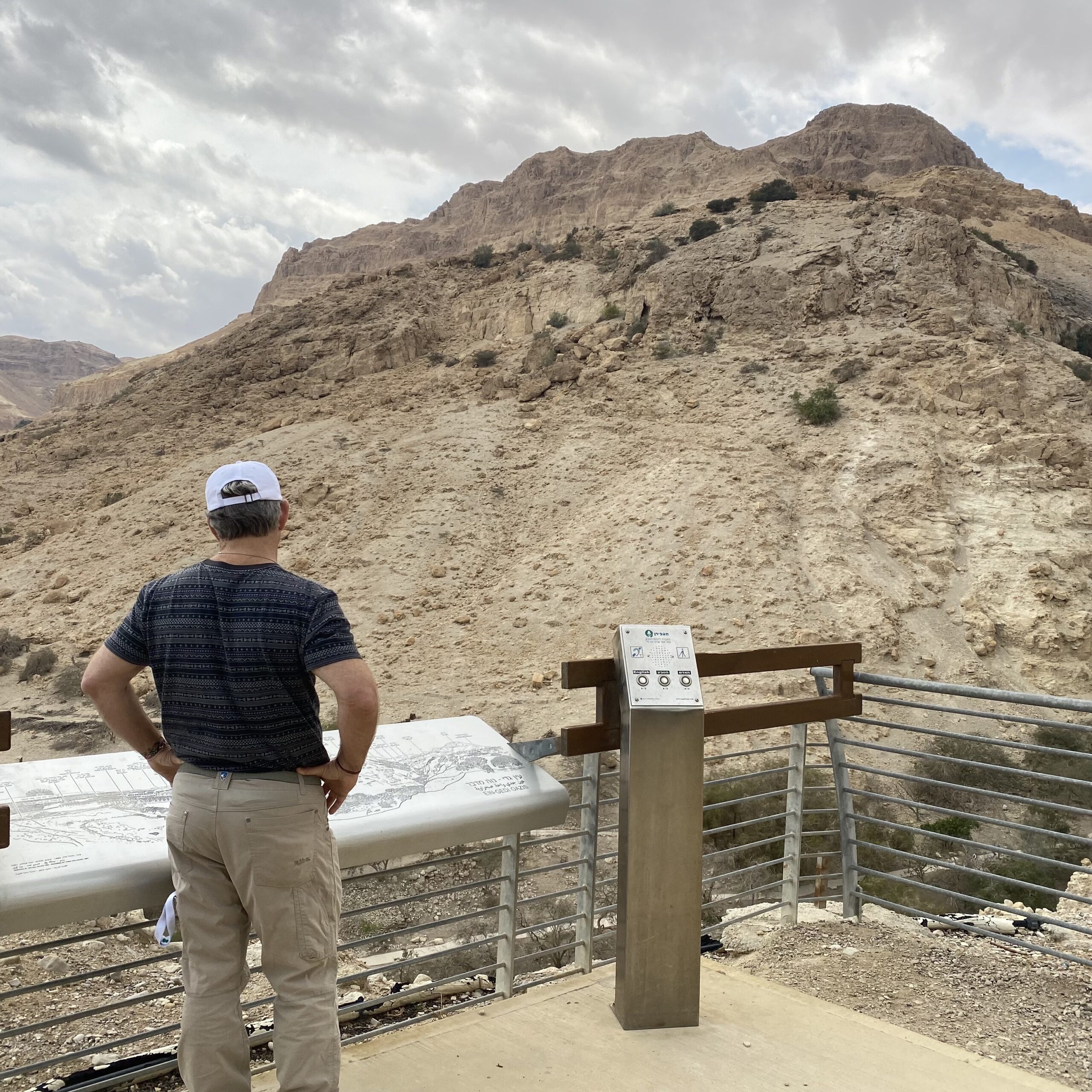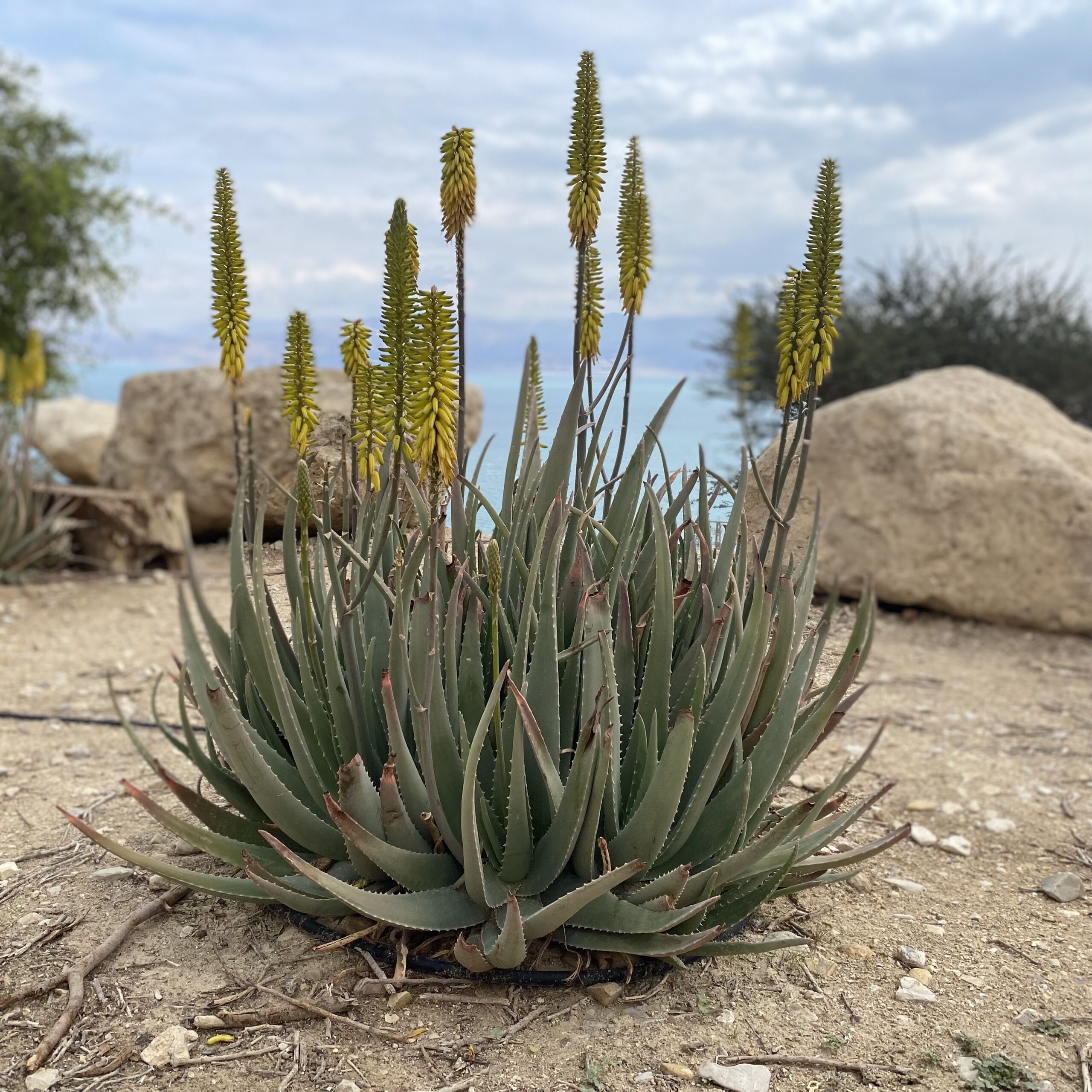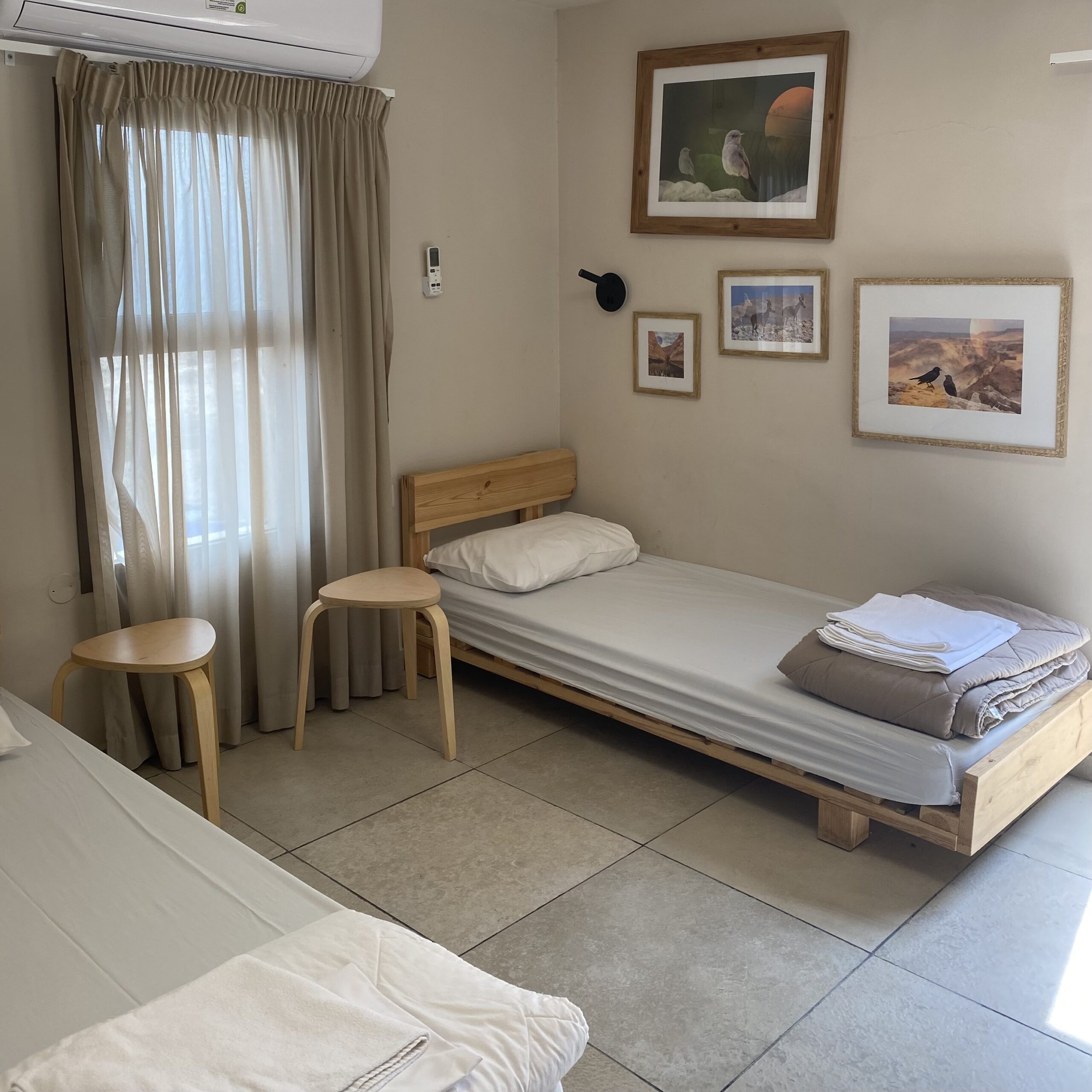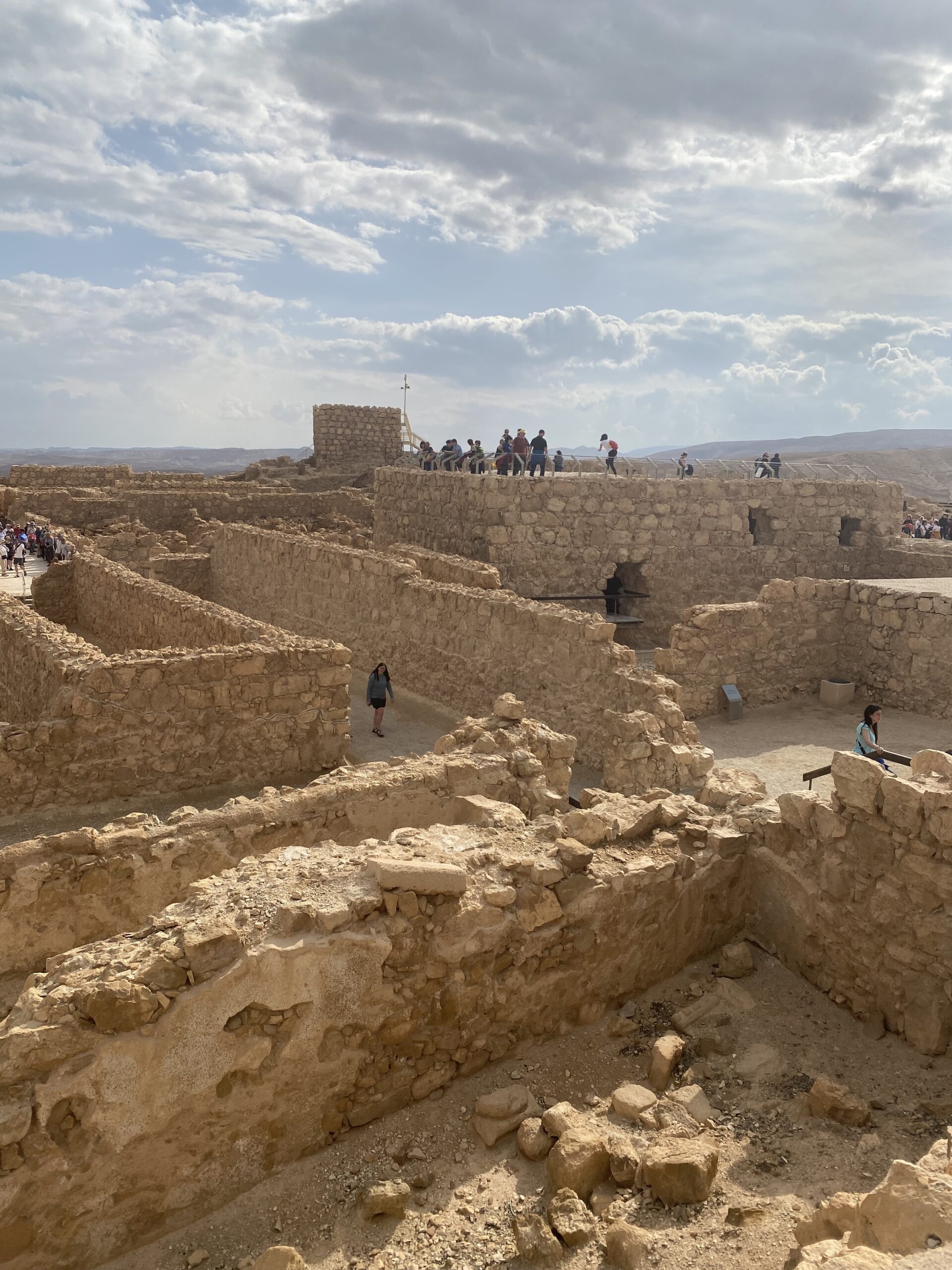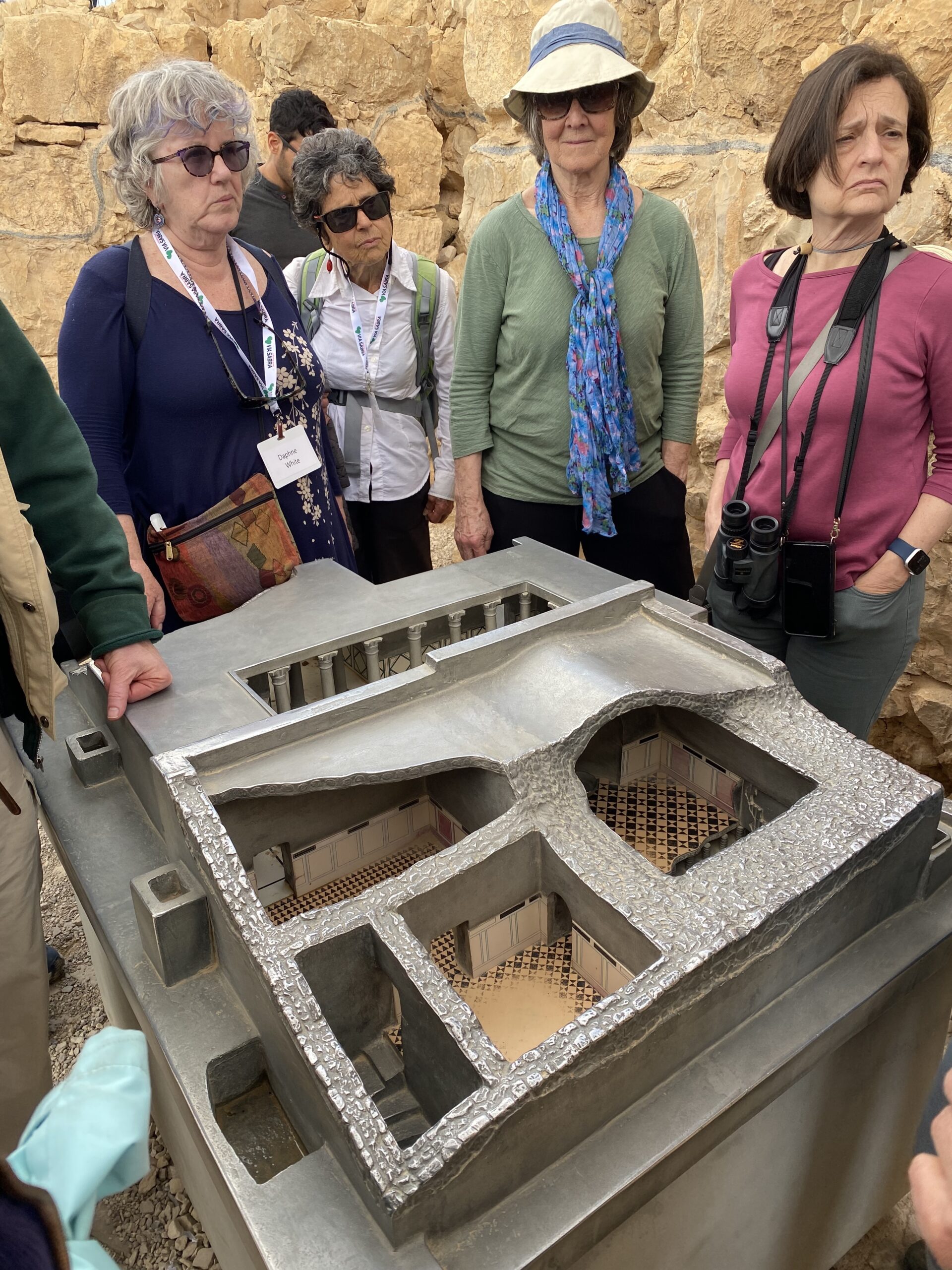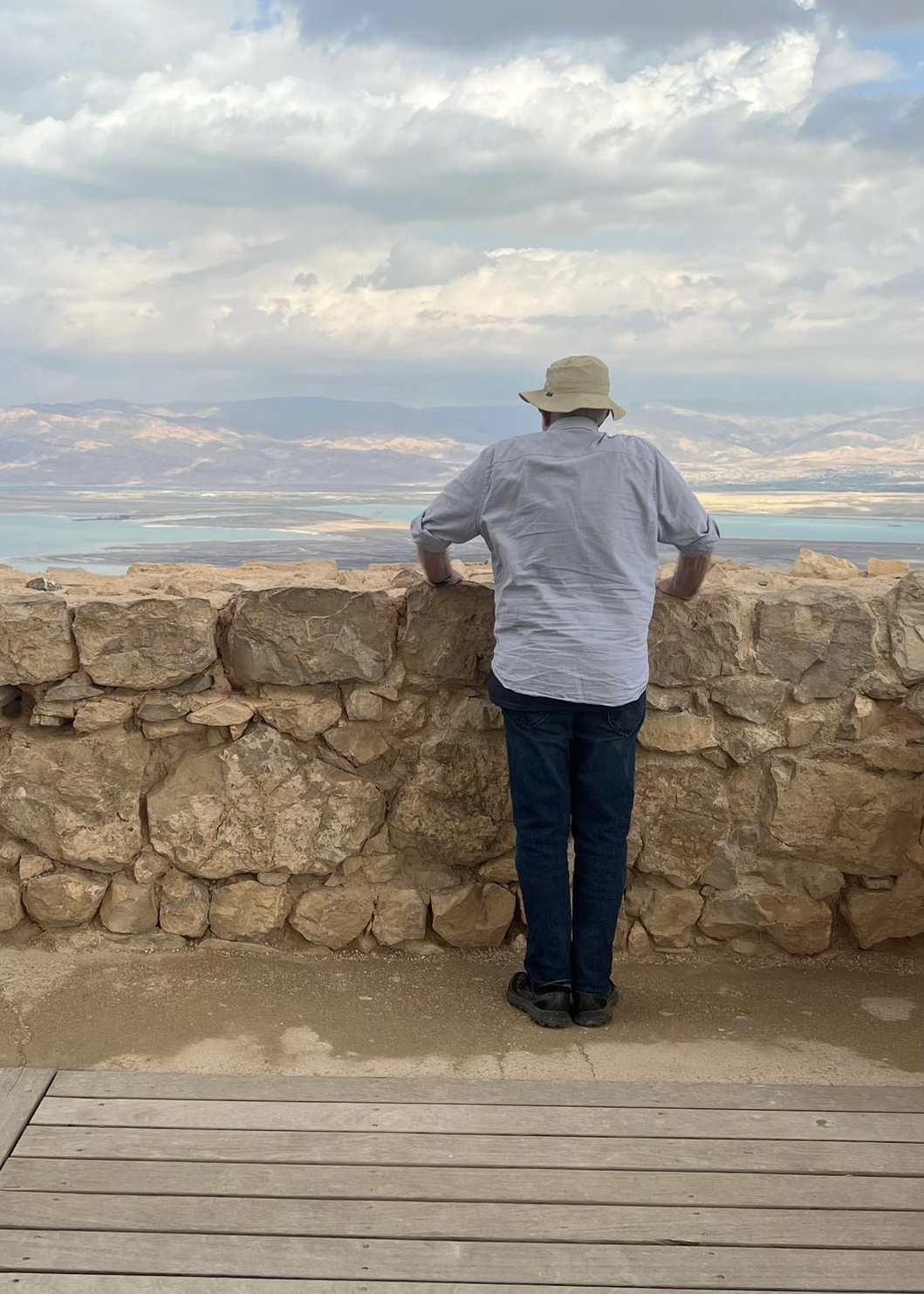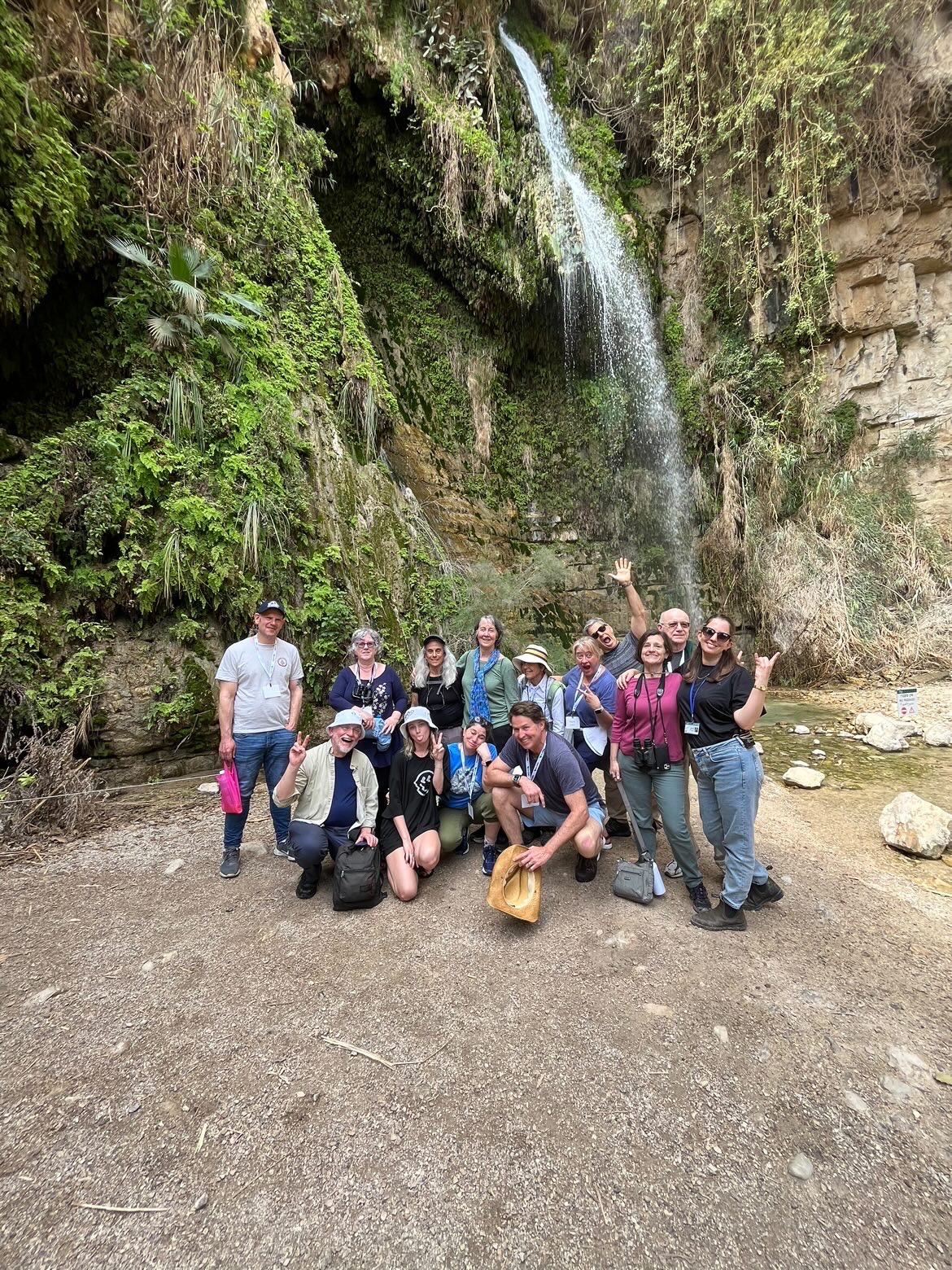
22 Mar March 21, 2023: Day 3
Wadi David Hike at Ein Gedi
“King David used to hide in these caves,” our tour guide, Reut, informed us as we arrived at the base of the Ein Gedi Nature Reserve, explaining where the name Wadi David comes from. We walked a bit to a space where we could all sit in a circle, and Reut told us about two major species here, the Ibex, a wild goat, and the Hyrax, a small, furry, rodent-like animal. She asked Barry Sheridan, SPNI’s Development Coordinator originally from the UK, to roleplay as David Attenborough and read aloud a description of the Hyrax mating process. Then she drew whiskers on trip participants Keith Lewis and Shawn Sweeney, getting them in character to act out the script Barry was reading. It was a hilarious show, in which Keith and Shawn had to stand on “boulders,” sing a song, and then fight over a female Hyrax.
Hiking up the Wadi David trail was no easy feat, but every steep bit of it was equally balanced with a rewarding eyeful of waterfalls and streams. Conversations flowed like the water, and I felt my bonds with the other participants strengthening as we helped each other up the path, and taking photos to send to our loved ones back home. We approached the final pool, and I climbed up on a nearby boulder to see the view from a higher elevation. Families, students, solo travelers, and more individuals of various backgrounds cycled through the site, appreciating the pure, natural beauty of Israel.
As we walked down, I found myself in a fascinating conversation with trip participant Gary Brandenburg. “I’m just imagining all the work that was put into these steps,” Gary said to me. My perspective was immediately shifted, and I was overwhelmed with the attention to detail and immense effort in both the planning process and implementation of this site, not only to preserve nature, but to make it accessible and inviting to the community.
Ein Gedi Field School
“The walls of the classrooms are canyons and cliffs, the ceiling is the sky of all seasons, the floor is sand and stones, trails and springs”
Educational panels and intricate stones lined the entrance of the Ein Gedi Field School. Inside, we got to be the first to see a whole new exhibition that was finished yesterday, featuring interactive, educational slats in both Hebrew and English. Looking at the elevated map of the Dead Sea and surrounding areas, two of our trip participants, the Segals, told me about their son that they visited in Tel Arad. The amazement at the personal connections and generational history that connects people to this land washed over me once again.
Stepping outside, trip member Mary Lewis admired the aloe plants. “I need to figure out how to make mine at home bloom like that,” she said. This sentiment created a metaphor, alluding to the way Israeli innovation around nature inspires modernization abroad.
Meanwhile, Evyatar, the director of the Ein Gedi Field School, pointed out the proximity of the school to the old city of Ein Gedi. He identified the erosion of the mountain we stood on; “We have to move the fence back because the Ibex crumble the mountain when they walk up,” Evyatar explained, “the math is one meter every five years.” SPNI continuously shows us examples of its ability to change with nature, as opposed to forcing nature to change around its facilities.
We toured the inside of a room in the school, and the space was extremely open and inviting. “The rooms here are all renovated with school students in mind,” Evyatar said, “even though we have families and individual travelers that come through as well.” I was reminded that no matter what walk of life someone is from, all of us are students of nature.
Masada
We took the gondola up Masada, and students on the snake trail weaved far below us as they hiked up the mountain. Reut told us the story of King Herod; “he wanted to make a point by coming here, to this isolated mountain in the middle of nowhere,” she said, “he wanted people to literally look up to him, so he made this place his winter palace.” Then, Reut continued, the Jews transformed this place into a military base to fight the Romans. This explained the two layers of the rock walls around us.
Reut took us around Masada, illustrating the complexities of the infrastructure of King Herod’s bathhouse, and the later Jewish renovations through miniature duplicates around the site. She described the tragedy of the Jews atop Masada discovering they would not win the battle against the Romans, and their decision to kill their families and each other instead of becoming enslaved.
Ending with a personal anecdote, Reut revealed that she was proposed to on Masada by her now husband. She initially responded in surprise, telling him that this was not a romantic site by any means, people killed themselves here! But in her soon to be fiancé’s mind, this place had been reframed as a positive, heroic site, consistent with the way most understand it today.




